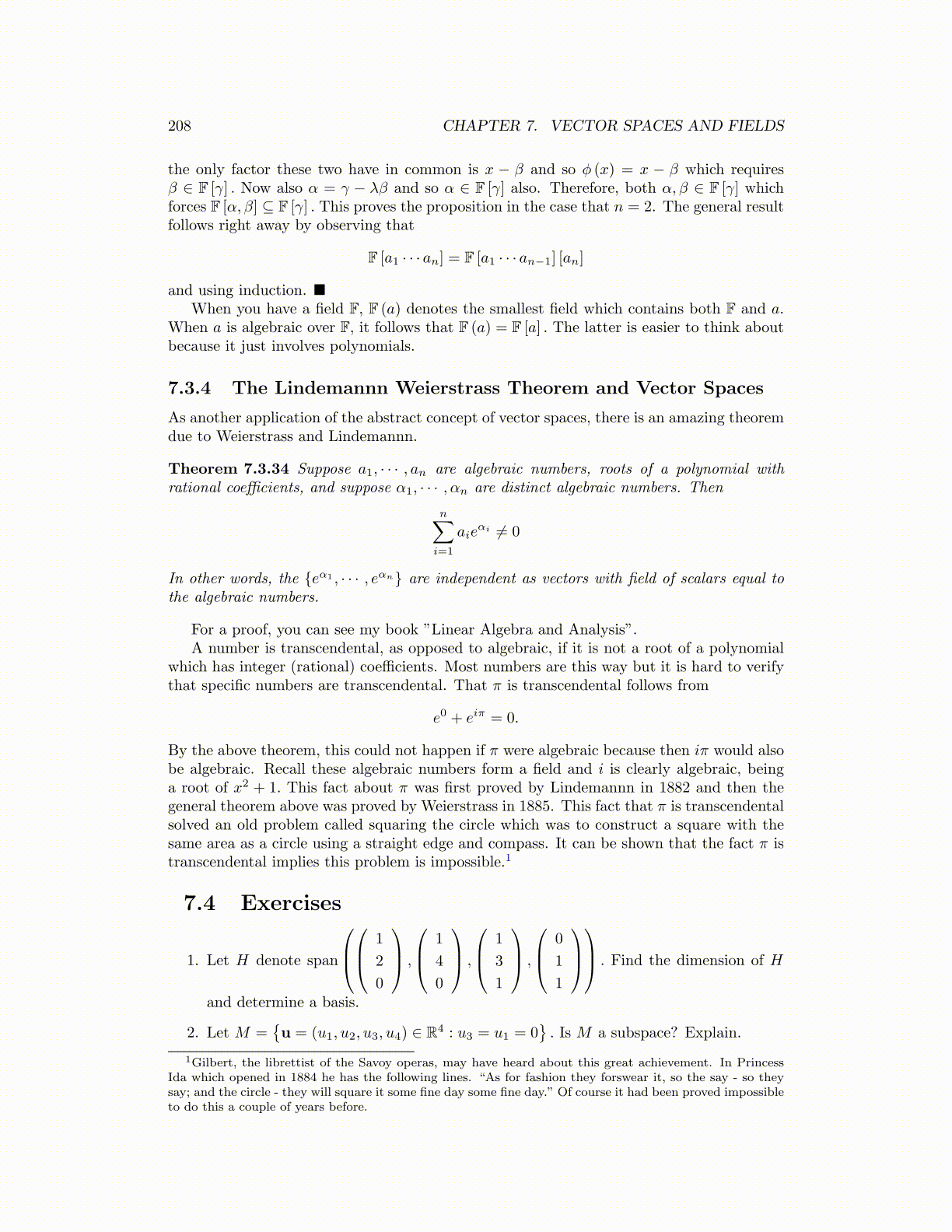
208 CHAPTER 7. VECTOR SPACES AND FIELDS
the only factor these two have in common is x − β and so ϕ (x) = x − β which requiresβ ∈ F [γ] . Now also α = γ − λβ and so α ∈ F [γ] also. Therefore, both α, β ∈ F [γ] whichforces F [α, β] ⊆ F [γ] . This proves the proposition in the case that n = 2. The general resultfollows right away by observing that
F [a1 · · · an] = F [a1 · · · an−1] [an]
and using induction. ■When you have a field F, F (a) denotes the smallest field which contains both F and a.
When a is algebraic over F, it follows that F (a) = F [a] . The latter is easier to think aboutbecause it just involves polynomials.
7.3.4 The Lindemannn Weierstrass Theorem and Vector Spaces
As another application of the abstract concept of vector spaces, there is an amazing theoremdue to Weierstrass and Lindemannn.
Theorem 7.3.34 Suppose a1, · · · , an are algebraic numbers, roots of a polynomial withrational coefficients, and suppose α1, · · · , αn are distinct algebraic numbers. Then
n∑i=1
aieαi ̸= 0
In other words, the {eα1 , · · · , eαn} are independent as vectors with field of scalars equal tothe algebraic numbers.
For a proof, you can see my book ”Linear Algebra and Analysis”.A number is transcendental, as opposed to algebraic, if it is not a root of a polynomial
which has integer (rational) coefficients. Most numbers are this way but it is hard to verifythat specific numbers are transcendental. That π is transcendental follows from
e0 + eiπ = 0.
By the above theorem, this could not happen if π were algebraic because then iπ would alsobe algebraic. Recall these algebraic numbers form a field and i is clearly algebraic, beinga root of x2 + 1. This fact about π was first proved by Lindemannn in 1882 and then thegeneral theorem above was proved by Weierstrass in 1885. This fact that π is transcendentalsolved an old problem called squaring the circle which was to construct a square with thesame area as a circle using a straight edge and compass. It can be shown that the fact π istranscendental implies this problem is impossible.1
7.4 Exercises
1. Let H denote span
1
2
0
,
1
4
0
,
1
3
1
,
0
1
1
. Find the dimension of H
and determine a basis.
2. Let M ={u = (u1, u2, u3, u4) ∈ R4 : u3 = u1 = 0
}. Is M a subspace? Explain.
1Gilbert, the librettist of the Savoy operas, may have heard about this great achievement. In PrincessIda which opened in 1884 he has the following lines. “As for fashion they forswear it, so the say - so theysay; and the circle - they will square it some fine day some fine day.” Of course it had been proved impossibleto do this a couple of years before.